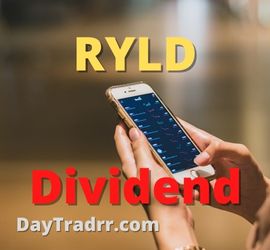What Is a Short Call?
 A short call is an options trading strategy where the trader is betting that the price of the asset on which they are placing the option is going to drop. Short call strategy involves a call option. This obligates the call seller to sell a security to the call buyer at the strike price if the call is exercised. A short call is a bearish trading strategy, reflecting a bet that the security underlying the option will fall in price. It involves more risk but requires less upfront money than a long put, another bearish trading strategy.
A short call is an options trading strategy where the trader is betting that the price of the asset on which they are placing the option is going to drop. Short call strategy involves a call option. This obligates the call seller to sell a security to the call buyer at the strike price if the call is exercised. A short call is a bearish trading strategy, reflecting a bet that the security underlying the option will fall in price. It involves more risk but requires less upfront money than a long put, another bearish trading strategy.
In return for receiving the premium, the seller of a call assumes an obligation. They must deliver the underlying instrument at the strike price at any time until the expiration date. This obligation has an unlimited risk because the price of the underlying can rise indefinitely. Speculators who sell uncovered calls hope that the price of the underlying stock or market index will trade sideways or decline so that the price of the call will decline. f
Using a short call strategy is one of two existing ways options traders can take bearish positions. It involves selling call options, or calls. Calls give the holder of the option the right to buy an underlying security at a specified price. If the price of the underlying security falls, a short call strategy profits. If the price rises, there’s unlimited exposure during the length of time the option is viable, which is known as a naked short call. To limit losses, some traders will exercise a short call while owning the underlying security, which is known as a covered call.
(Source: fidelity & investopedia)
Short Call vs. Long Call
A call option is a contract between a buyer and a seller. The buyer is known as the option holder. The seller is known as the option writer. This contract gives the holder the right, but not the obligation, to buy shares of an underlying security at an agreed-upon price. The agreed-upon price in an option contract is known as the strike price. Options contracts have expiration dates. This means that an option contract must be exercised before or on the expiration date. If an option contract is not exercised, then it will expire with no value.
- Long Call – If an investor were to implement the long call strategy, then he would buy a call option and assume the role of the option holder. This strategy would be used if the investor was heavily bullish on a stock and expected the stock’s price to rise significantly.
- Short Call – If an investor implemented the short call strategy, then he would sell a call option and assume the role of the option writer. This strategy would be used if an investor was heavily bearish on a stock and expected the stock’s price to fall significantly.
Naked Short Call Vs. Covered: What’s the Difference?
- A naked call – is an options strategy that involves an investor writing (selling) call options on the open market. This is without actually having official ownership of the underlying security. Evidently, this is in contrast to a covered call strategy. With that one, the investor does, in fact, own the underlying security on which the call options are written. This strategy gives an investor the capability of revenue generation without formally possessing the underlying security. In essence, the premium they receive is the primary incentive for writing an ‘uncovered call’ option. It is inherently risky, due to there being a limit of upside profit potential. Moreover, in theory, there is no limit to the downside loss potential.
- A covered call – is among the more popular options strategies that can generate income for an investor’s account. Specifically, in the form of premiums. In order to properly execute this, an investor holding a long position in an asset needs to write call options on that same asset. This will effectively produce an income stream. This is a neutral strategy. This means that the investor anticipates a minor increase or decrease in the underlying stock price of the written call option. It’s especially useful whenever an investor has a short-term neutral view of the asset. Because of this, it holds the asset long. Moreover, it simultaneously possesses a short position by way of the opportunity to generate income from the option premium.
(Source: hedgetrade)
Short Call – Advantages & Risks
Advantages
- Immediate return – You get your maximum profit right away. Of course, you could lose that profit if the underlying stock price drops, so don’t get too excited.
- Significant returns in the short term – Options operate with leverage. That means you can see significant returns over just a few months.
Risks
- Unlimited loss – There’s nothing to prevent a stock price from skyrocketing once you’ve sold the option. In that case, you’ll take a huge loss.
- Margin wipe-out – If the trade goes south, you could end up spending a lot of cash out of your account to cover the short call. With less cash in your account, your margin funds will decrease accordingly.
(Source: investingdaily)
Short Call Option Example
Assume stock ABC has a price per share of $50. An investor expects the price of ABC to decrease within the next month. The investor writes one call option with a strike price of $52 that expires in a month. The seller receives a premium of $2 per share or a total of $200 for writing the option.
Within the month, stock ABC never closes above $52. The option expires as worthless. The option writer profits $200 because of the premium. However, let’s assume the share price did rise to $55 within the month. In this case, the option would have been exercised and the option writer would be obligated to sell the shares of stock at $52 rather than $55. That comes out to be a loss of $3 per share for the option writer.
Short Call Vs. Long Put
A short strategy is one of two common bearish trading strategies. The other is buying put options or puts. Put options give the holder the right to sell a security at a certain price within a specific time frame. Going long on puts is also a bet that prices will fall, but the strategy works a bit differently.
A call refers to an option contract giving owners the right to buy a specific amount of underlying security. They can buy it at a specific price within a specified time frame. Conversely, a put is an option contract grants a contract owner the right to sell a specific amount of underlying security.
Both puts and calls guarantee a specific price within a specific time frame. In a way, it’s achieving the same goal, just through the opposite route. Of course, the long put does require that the purchaser exposes funds upfront. The advantage is that the purchaser can lose is the total price of the option and no more.
Final Words
The short call option is an advanced strategy. It is for experienced investors who want to capitalize on selling volatility when markets are overbought. As time moves on, the premium received decays, allowing investors to either keep the whole premium or repurchase it later for a lower price. Beginning traders should not use this strategy. It is dangerous as the maximum loss is unlimited. Besides individual stocks, sometimes investors also like to sell call index options. A reason for trading index options is because they are considered to be less volatile compared to individual stocks.
The potential for profit is low and there is unlimited risk involved if the stock continues to rise. However, traders prefer to sell calls because the possibility of profiting from it is high. Specifically, when the option is out of the money and the trade is timed correctly. As an alternative, if an investor is expecting a stock to trade back down, they should consider a bear spread. This gives the investor the ability to profit by selling premium but allows them to cut their losses if they’re wrong in their analysis.
(Source: optionstrategiesinsider)
Up Next: Day Trading For Beginners – What Is A Day Trader?
Day trading can be summarized simply as buying a security and quickly selling or closing out the position within a single trading day. Ideally, a day trader wants to “cash-out” by the end of each day with no open positions to avoid the risk of losses by holding a security overnight. Day trading is not for everyone and carries significant risks. It requires an in-depth understanding of how the markets work and various strategies for profiting in the short term. Short term profits require a very different approach compared to traditional long term, buy and hold investment strategies.




